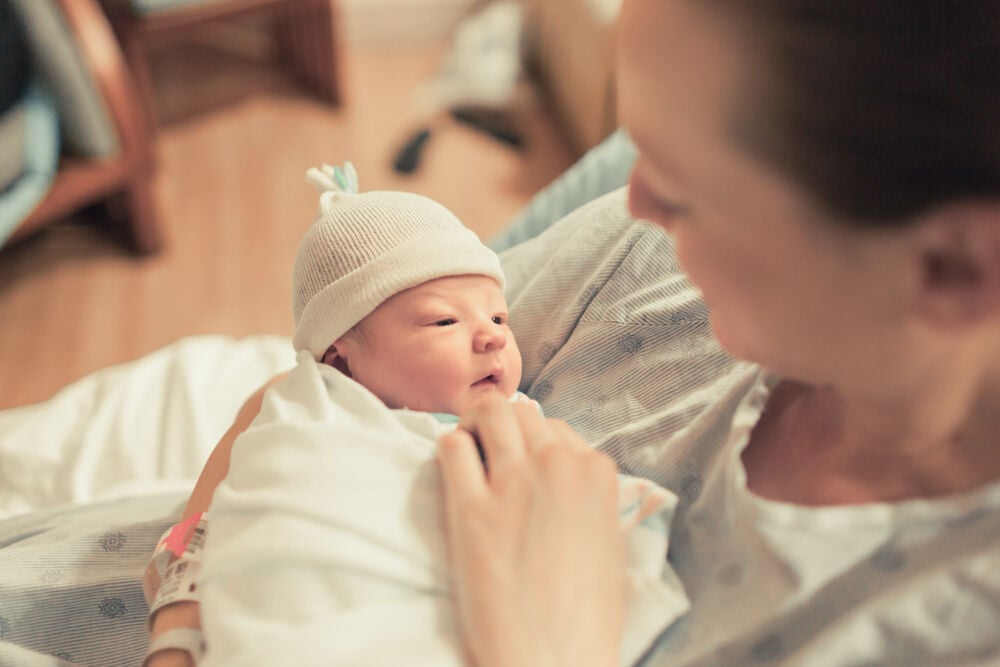Are you afraid of not being able to deliver the placenta once your baby is born? Having an idea of the causes and symptoms of the retained placenta can help you get rid of your fears.
-
Tracking cycle
-
Getting pregnant
-
Pregnancy
-
Help Center
-
Flo for Partners
-
Anonymous Mode
-
Flo app reviews
-
Flo Premium New
-
Secret Chats New
-
Symptom Checker New
-
Your cycle
-
Health 360°
-
Getting pregnant
-
Pregnancy
-
Being a mom
-
LGBTQ+
-
Quizzes
-
Ovulation calculator
-
hCG calculator
-
Pregnancy test calculator
-
Menstrual cycle calculator
-
Period calculator
-
Implantation calculator
-
Pregnancy weeks to months calculator
-
Pregnancy due date calculator
-
IVF and FET due date calculator
-
Due date calculator by ultrasound
-
Medical Affairs
-
Science & Research
-
Pass It On Project New
-
Privacy Portal
-
Press Center
-
Flo Accuracy
-
Careers
-
Contact Us
What Are the Symptoms of a Retained Placenta?


Every piece of content at Flo Health adheres to the highest editorial standards for language, style, and medical accuracy. To learn what we do to deliver the best health and lifestyle insights to you, check out our content review principles.
What is a retained placenta?
Let's start with the basis. The placenta is a temporary organ that connects the fetus to the lining of the womb through the umbilical cord.
The placenta is very crucial: on the one hand, it keeps the baby's blood supply separate from the mother's. On the other hand, it provides the link between the both and caries out the functions that the unborn baby can't perform itself. The placenta also protects the baby against infecitons.
Once the baby is born, the placenta is usually delivered with a couple of contractions. Usually, but not always. Sometimes it remains partly or wholly in the womb and can't be delivered naturally. The condition is called a retained placenta.
The retained placenta can be a result of difficult labour and woman's loss of strength. If not timely addressed, a retained placenta can lead to endomyometritis and postpartum hemorrhage.
Types of a retained placenta
There are four major types of a retained placenta.
- Placenta adherens
This is the most common type of a retained placenta. This occurs when the contractions of the mother's womb is too small to allow the expelling of the placenta. This actually results in the placenta becoming solely attached to the wall of the uterus after birth.
- Placenta accreta
Placenta accreta is defined as the superficial attachment of the placenta to the uterine myometrium. Placenta accreta causes an inability of the placenta to properly separate from the uterine wall after the delivery of the fetus. This can result in profuse hemorrhage and shock with substantial maternal morbidity and mortality, such as need for hysterectomy, surgical injury to the ureters, bladder, and other viscera, adult respiratory distress syndrome, renal failure, coagulopathy, and death.
- Placenta previa
In this case, the placenta attaches inside the uterus but near or over the cervical opening. This condition makes delivery very difficult and this often results in severe postpartum homorrhage. After this condition, blood transfusion may be needed for the mother to survive.
- Trapped placenta
This occurs when the placenta successfully detaches from the wall of the uterus but it becomes so difficult to expel the placenta out of the uterus. Most times, this occurs due to the closure of the cervix before the placenta gets expelled.

Symptoms of a retained placenta
In most cases, the symptoms of the retained placenta are the following:
- Foul smelling vaginal discharge
- High fever
- Painful cramping and contracting
- Delay in milk production
- Postpartum hemorrhage.
How can a retained placenta be treated?
There are various ways of treating the retained placenta in the uterus and they include: manual removal of placenta.
- Curettage is used for removing the rest of the placenta debris after the placenta have been removed manually. This method is done by scrapping off the debris in the uterus in the case of placenta accreta.
- Controlled traction is used when there is a trapped placenta in the uterus. In this case, your physician will help to pull out the umbilical cord to get rid of the placenta.
- Manual removal of the placenta can be performed by your physician. He or she will insert a catheter to empty the bladder. He or she will give an intravenous antibiotic to prevent infection. After this, you will be given anesthesia and your physician will then remove the placenta. After this, you will be given one intravenous drug to allow for the contraction of the uterus.
Take a quiz
Find out what you can do with our Health Assistant
Who is at risk of a retained placenta?
This condition may be paramount in some women due to certain factors. These factors include:
- Pregnancy after the age of thirty: getting pregnant quite late for a woman can dispose her to having this condition. Retained placenta can set in due to her lack of strength to labor very easily.
- Having a premature delivery: this also can expose a woman to the condition of having a retained placenta.
- Long first and second phases of delivery can make a woman too weak to expel the membrane out of her uterus.
- Delivering a stillborn can also cause a retained placenta.
Other risk factors include lobulated placenta, previous uterine surgery, etc.
What are the potential complications?
On the list of postpartum complications, caused by the retained placenta bleeding is the most significant. This inability to contract causes severe bleeding of the blood vessels for about 24 hours and this is known as primary postpartum hemorrhage (PPH).
There is also a risk that a general anesthetic used during the treatment will get into the breastmilk and you won't be able to breastfeed immediately after the procedure.

Can I prevent a retained placenta in the next pregnancy?
Unfortunately, there is no much scientifically proved idea on how to prevent this condition. But it has been noticed that the use of artificial oxytocin can increase the risk of having a retained placenta. Also, if you have had retained placenta before, there is a high possibility of it occurring again.
Body to body contact with the baby can help to reduce the risk of a retained placenta.
If you fall into a high-risk category for a retained placenta or have experienced one in the past, talk to your doctor before giving birth again. Your doctor will help you avoid the possible complications.


Hey, I'm Anique
I started using Flo app to track my period and ovulation because we wanted to have a baby.


The Flo app helped me learn about my body and spot ovulation signs during our conception journey.


I vividly
remember the day
that we switched
Flo into
Pregnancy Mode — it was
such a special
moment.
Real stories, real results
Learn how the Flo app became an amazing cheerleader for us on our conception journey.
References
https://www.mumsnet.com/Talk/pregnancy/1459461-Retained-placenta-can-I-avoid-it-happening-again
https://www.netdoctor.co.uk/ask-the-expert/babies-children/a9839/how-can-i-prevent-a-retained-placenta/
https://www.bellybelly.com.au/birth/retained-placenta-symptoms-and-treatment/
https://journals.lww.com/greenjournal/Fulltext/2012/04000/Epidemiology_of_Retained_Placenta__Oxytocin_as_an.16.aspx




